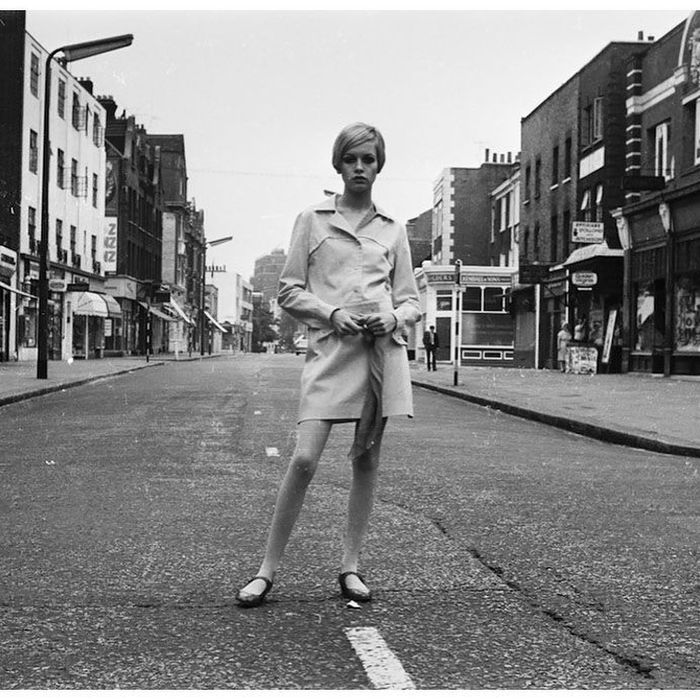TV and our desire to transform the on-screen fashion world into a reality
Emma Rowley looks back on how fashion in TV can influence the development of trends, spread the name of designers and fuel our desire for a post-lockdown fashion renaissance
We live in a culture laced with input from the visual world, from TV to billboard posters. Especially now, as we face a national lockdown, we’re still searching for ways to satisfy a thirst for colour and beauty. In fact, with far fewer places to visit than before, and significantly less sensory experience, we find our grounding to be even more firmly placed in the visual landscape, from Skype calls to the restless hours we spend staring at our phones. As Desmond Morris writes in The Naked Ape, we as humans are programmed to look for colour to survive and are now relying on brightness and brilliance to maintain our spirits as we try to mentally survive this time of crisis.
An obsession with the things we see on TV as well as other virtual media is hardly a new one. I myself recall being obsessed with the mittens sewn onto Lola’s coat in Charlie and Lola and begging my mum to buy me a coat just like it, because I wanted to feel as though I were part of the pink milk-drinking Lauren Child fantasy world. It’s easy to be obsessed with a world where everything is designed and thought out to be perfect, from clothes to decor. TV-reality seems to have bled through into our imagination our creation of the ‘ideal’ life we aspire to live.
A glorious and unrestrained fashion era born out of lockdown.
It is easy to see the impact TV can have on the fashion industry as a result of this – Killing Eve has propelled many designers into the public light, perhaps most noticeably Molly Goddard, winner of the BFC/ Vogue Designer Fashion Fund in May 2018, who designed Villainelle’s iconic pink tulle dress. The carefully planned fashion-oriented reality of Villainelle’s life has greatly helped to turn Goddard’s world upside-down. At first, Goddard saw people wearing versions of her iconic dress for Hallowe’en, and is now finding herself on her cover of Stylist Magazine, featuring in Vogue and being worn by Adwoa Aboah and Edie Campbell. Even a short glimpse of an outfit can have a monumental impact on the viewers: with attention to new designers and styles, our fashion-culture changes and progresses through media.
It’s not just dramas, either – reality TV has also exploited the way we can be influenced. On Love Island, we see the contestants being given bags of designer clothes and swimwear to wear as the series progresses, adding to the apparent ‘glamour’ of the programme. The producers know that those of us who crave their somewhat glossy and glitzy life are likely to buy the clothes they wear to achieve a closer step to it.
During the current crisis, the idea of wanting to achieve a life like those we witness on TV has taken a somewhat different turn. In the monotony of lockdown life (mostly wearing pyjamas and no make-up all day), we might be beginning to seek for escapism within visions of expressing the more glamorous and more confident sides of ourselves. For me, this is most often dreams of going to my college’s May Ball and imagining everyone decked in finery, like the prom scene out of a teen movie. Yet, for others this may simply be the idea of punting down the river, Brideshead Revisited-style, in straw hats. Given that the only visual reminder of the ‘old normal’ we can access is the life we see on TV shows, it seems as though TV is heavily influencing our creation of bright and picturesque daydreams of what we want to do in future.
Indeed, it’s a well-known fact that after times of crisis, we turn to glamour. Who can forget the famous roaring twenties after the First World War, and the beautiful Dior dresses created after the Second World War? We transform the brightly coloured daydreams that we invent during times of grey into reality once that grey is over, rewriting the rules of what we want to wear when optimism is able to seep into our futures again. We are more likely to spend money on the clothes we want when life has stopped being limited because we want to embrace life fully again.
Under lockdown, TV is filling our days more than ever. Its picture-perfect scenes seem to act as a catalyst to our post-lockdown daydreams, adding fuel to our plans to embrace life more fiercely than ever once we regain old privileges. These dreamed-up realities are likely to include the colour, vision and beauty we crave whilst we are currently stuck inside our homes, perhaps encouraging us to become braver with the clothes and accessories we choose to wear. TV’s potential power in the fashion industry may be revealed once lockdown is over and we emerge, immune and ready to embrace life, with a wardrobe to match. What we think of as treats for ourselves, inspired by the visions of the life we want to regain, may in fact spark a glorious and unrestrained fashion era, born out of lockdown.
 Comment / Cambridge’s tourism risks commodifying students18 April 2025
Comment / Cambridge’s tourism risks commodifying students18 April 2025 News / Cambridge student numbers fall amid nationwide decline14 April 2025
News / Cambridge student numbers fall amid nationwide decline14 April 2025 News / Greenwich House occupiers miss deadline to respond to University legal action15 April 2025
News / Greenwich House occupiers miss deadline to respond to University legal action15 April 2025 Comment / The Cambridge workload prioritises quantity over quality 16 April 2025
Comment / The Cambridge workload prioritises quantity over quality 16 April 2025 Sport / Cambridge celebrate clean sweep at Boat Race 202514 April 2025
Sport / Cambridge celebrate clean sweep at Boat Race 202514 April 2025





